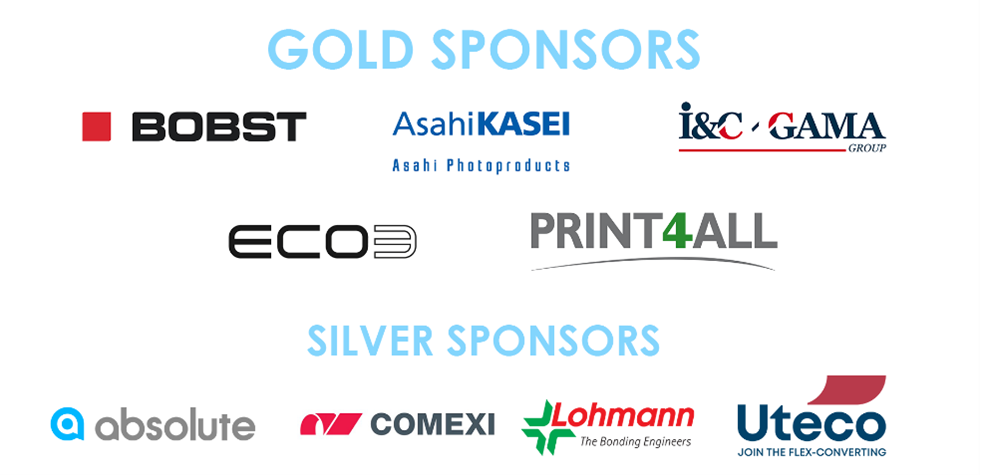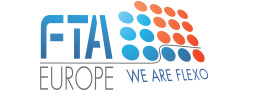PRESS RELEASE
16 APRIL 2025
BRUSSELS, BELGIUM
The European printed packaging market is projected to grow to €114.6 billion by 2029, with an annual growth rate of 1.9%. Flexographic printing, the dominant process in Europe, will grow steadily at 1.4%, increasing from €44.0 billion in 2024 to €47.2 billion in 2029. Overall, packaging remains a resilient, growing sector—especially in food and e-commerce—with increasing importance placed on sustainability, automation, and regulatory compliance.
On 10 and 11 April, more than 100 delegates from 23 countries joined the Shaping the Future with Packaging 2025 conference to discuss the rapidly evolving packaging landscape. The event offered a comprehensive look at the key regulatory, technological, and market trends shaping the future of printed packaging in Europe and beyond.
Moderated by Joanna Stephenson, Managing Director of Think B2B Marketing, the event brought together policymakers and industry leaders for two days of learning, collaboration, and in-depth discussions on key regulatory, technological, and market trends shaping the future of printed packaging in Europe and beyond.
Jon Harper Smith of Smithers presented the latest market data, noting that “packaging is going to use more water-based inks” as sustainability becomes a growing priority. He highlighted that digital printing is already widely used in pressure-sensitive labels and corrugated packaging—and is growing in cartons and flexibles.
From the European Commission (DG Environment), Ioannis Antonopoulos introduced the newly adopted Packaging and Packaging Waste Regulation (PPWR), which sets binding sustainability targets across the EU. While he acknowledged efforts to ease the burden on SMEs, he stressed that “everything placed on the market must comply,” including products sold via online retailers, who will also face enforcement.
Pieter De Buysser from NXTGEN gave a compelling take on artificial intelligence, likening tools like ChatGPT to “a game that helps us adapt to new technology, like Microsoft Paint taught us to use the mouse.” He advocated for combining AI with company-specific data to gain a competitive edge, but cautioned: “Do not use AI for everything you can use it for. It’s the choices you make that set you apart.”
Peter Stael, partner at Across-consult, highlighted the strategic role of retail in brand visibility, noting that “supermarkets have major influence on how brands are shelved,” which in turn affects packaging decisions.
Case studies from Goglio and Ghelfi Ondulati, presented by Osvaldo Bosetti and Anna Vezzali, showcased successful transitions from traditional gravure to flexo and hybrid flexo-digital printing—driven by sustainability, flexibility, and shorter delivery times. Notably, Ghelfi’s shift away from plastic has been well received by customers, and innovations like variable data printing have enhanced product traceability.
Jules Lejeune, Managing Director of FINAT, shared that after a 25% drop in 2023, the European label market rebounded by 15% in 2024. He emphasised that “sustainability and circular economy are strategic drivers” and that legislation like PPWR and Eco-Design are “on the agenda of all associations.” He also noted that “consumers are more price-conscious”, pushing brands toward “flexible, tech-enabled solutions” that balance cost-efficiency and sustainability.
Suhas Kulkarni, Country Head of SOMA Enterprise, gave an overview of South and Southeast Asia’s booming packaging sector, forecasting 4–6% annual growth to 2030. He spotlighted rising trends in smart labels, eco-materials, and personalisation.
Nikolaas Verhelst of VPK Group demonstrated how innovation and sustainability go hand in hand. By combining data analysis with on-site visits, VPK optimises packaging through solutions like fit-to-size packaging and fanfold manufacturing, which not only boost efficiency but also help track and reduce emissions.
Wrapping up the event, Paul Horton of Diageo discussed how AI-driven personalisation is revolutionising the USD 117.98 billion gifting market. He introduced a scalable, platform-based model built on co-creation, innovation, and responsible AI use, showing how packaging can deliver emotional, customised experiences that truly connect with consumers.
The packaging industry is at a turning point, driven by a mix of new legislation, advancing technology, and changing consumer expectations. As companies prepare for the incoming EU requirements and increasing market complexity, flexibility, innovation, and collaboration will be essential.
About the event
Intergraf and FTA Europe organised Shaping the Future with Packaging with the support of Smithers.
The event’s gold sponsors were Asahi Photoproducts, BOBST, ECO3, I&C GAMA, and Print4All. Silver sponsors were Absolute, Comexi, Lohmann, and Uteco.
Shaping the Future with Packaging is the 2025 edition of Intergraf’s annual event series: Shaping the Future with Print. Every year, we focus on a different section of the printing industry. Previously, we have focused on books, commercial print, magazines, and direct mail.
Every event in this series includes an exclusive market report by Smithers.
More information on the event and its programme & speakers is available here.

Resources
A media kit containing selected images of the event can be downloaded here (link expires on 16/05/2025).
A pre-distribution copy of Smithers’ European Packaging Market Report is available for journalists who attended the event. Please contact Sergejs Mikaeljans, Communications & Events Officer at Intergraf (smikaeljans@intergraf.eu), before 28 April. The complete report will be shared with all attendees shortly.

– ENDS –
Notes to Editor
FTA Europe represents the common interests of the European flexographic (flexo) printing industry. The association provides a common platform for national flexo associations in Europe to collaborate in areas of shared interest and also advocates for the industry to the EU institutions. The office of FTA Europe is located in Brussels. For permission to use photos, contact the Secretariat.
Contact info@fta-europe.eu
